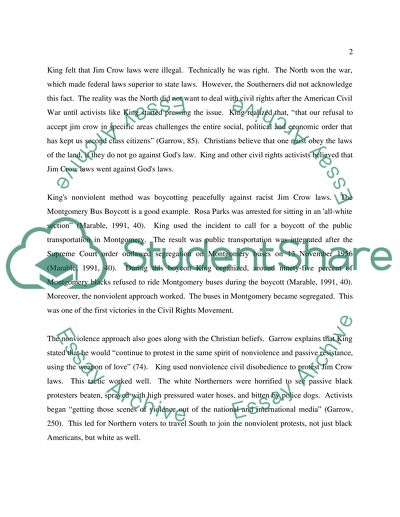Cite this document
(Blacks and the US Constitution Essay Example | Topics and Well Written Essays - 2750 words, n.d.)
Blacks and the US Constitution Essay Example | Topics and Well Written Essays - 2750 words. Retrieved from https://studentshare.org/history/1542968-how-would-you-characterise-martin-luther-kings-strategy-for-gaining-civil-rights-in-what-ways-did-it-differ-from-the-approach-espoused-by-malcolm-x-or-stokely
Blacks and the US Constitution Essay Example | Topics and Well Written Essays - 2750 words. Retrieved from https://studentshare.org/history/1542968-how-would-you-characterise-martin-luther-kings-strategy-for-gaining-civil-rights-in-what-ways-did-it-differ-from-the-approach-espoused-by-malcolm-x-or-stokely
(Blacks and the US Constitution Essay Example | Topics and Well Written Essays - 2750 Words)
Blacks and the US Constitution Essay Example | Topics and Well Written Essays - 2750 Words. https://studentshare.org/history/1542968-how-would-you-characterise-martin-luther-kings-strategy-for-gaining-civil-rights-in-what-ways-did-it-differ-from-the-approach-espoused-by-malcolm-x-or-stokely.
Blacks and the US Constitution Essay Example | Topics and Well Written Essays - 2750 Words. https://studentshare.org/history/1542968-how-would-you-characterise-martin-luther-kings-strategy-for-gaining-civil-rights-in-what-ways-did-it-differ-from-the-approach-espoused-by-malcolm-x-or-stokely.
“Blacks and the US Constitution Essay Example | Topics and Well Written Essays - 2750 Words”. https://studentshare.org/history/1542968-how-would-you-characterise-martin-luther-kings-strategy-for-gaining-civil-rights-in-what-ways-did-it-differ-from-the-approach-espoused-by-malcolm-x-or-stokely.


